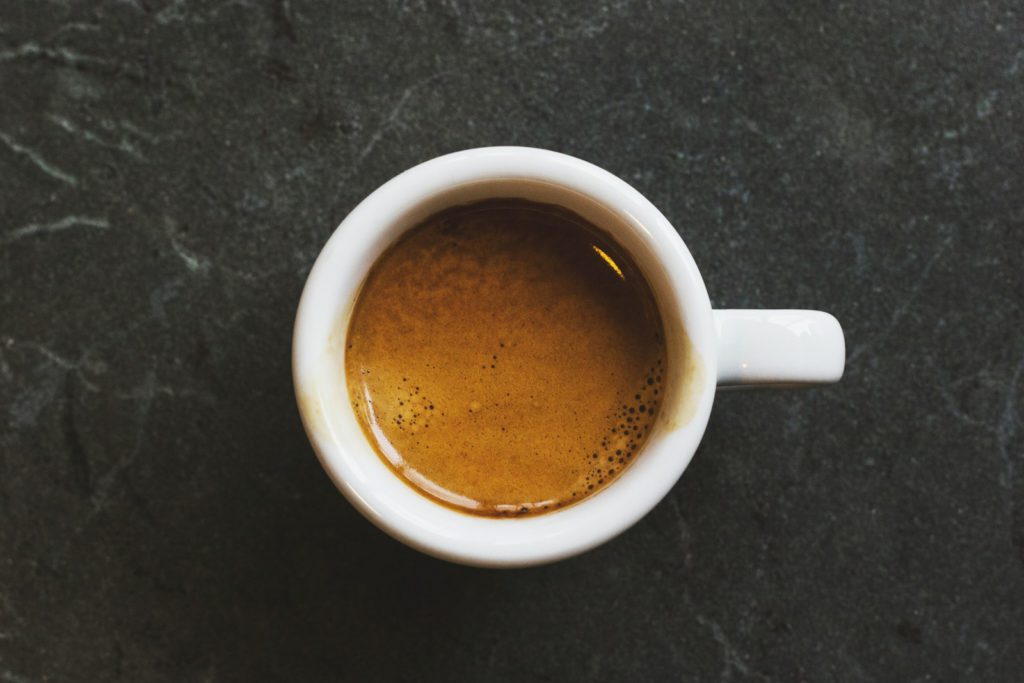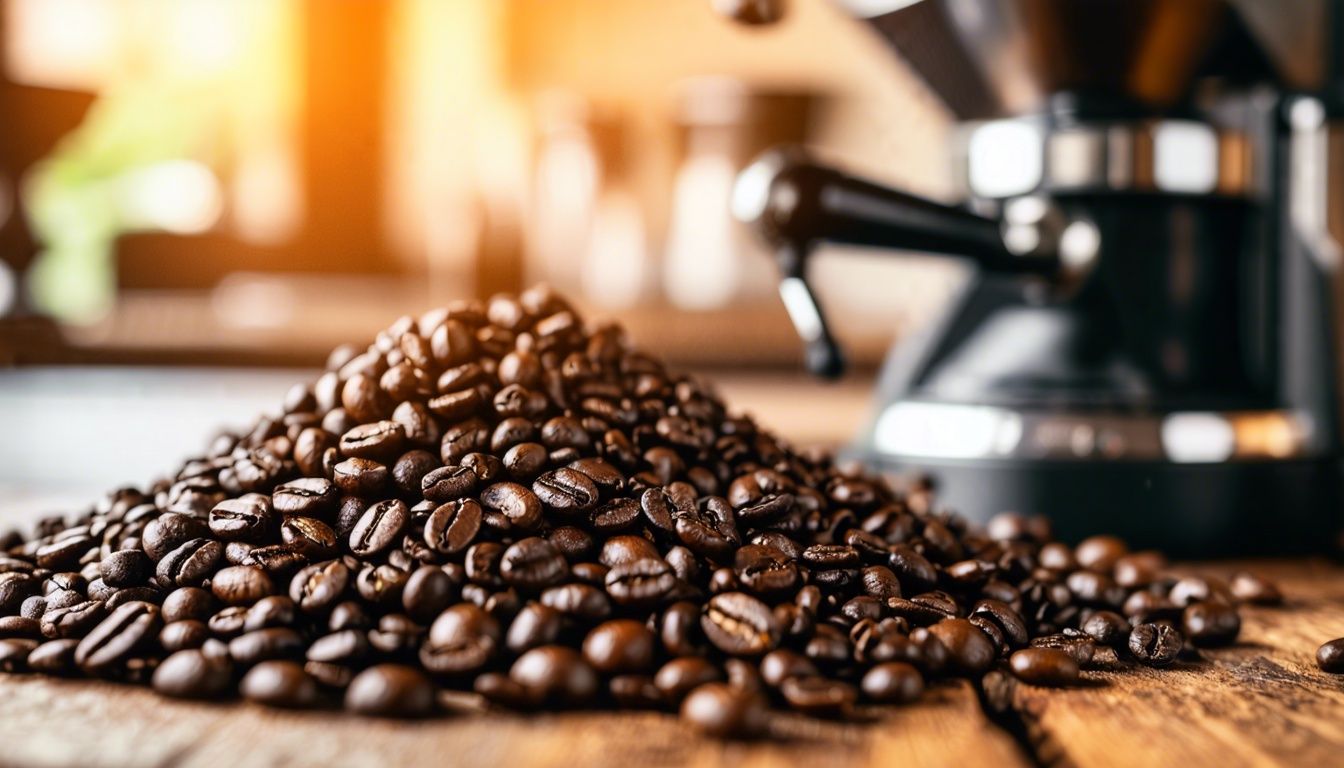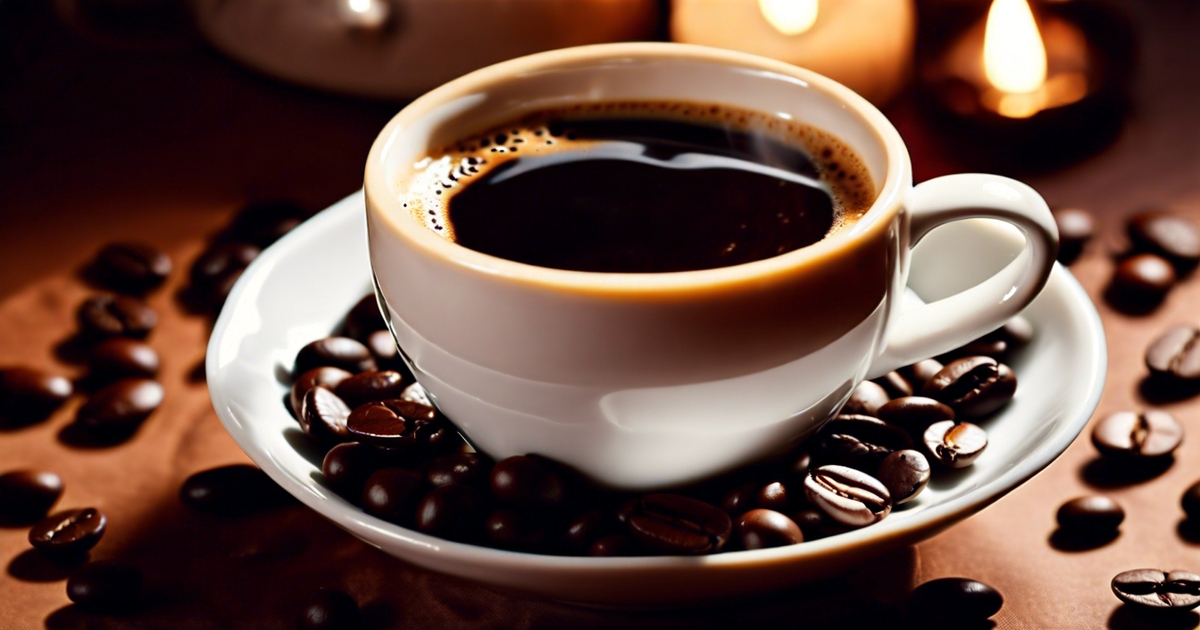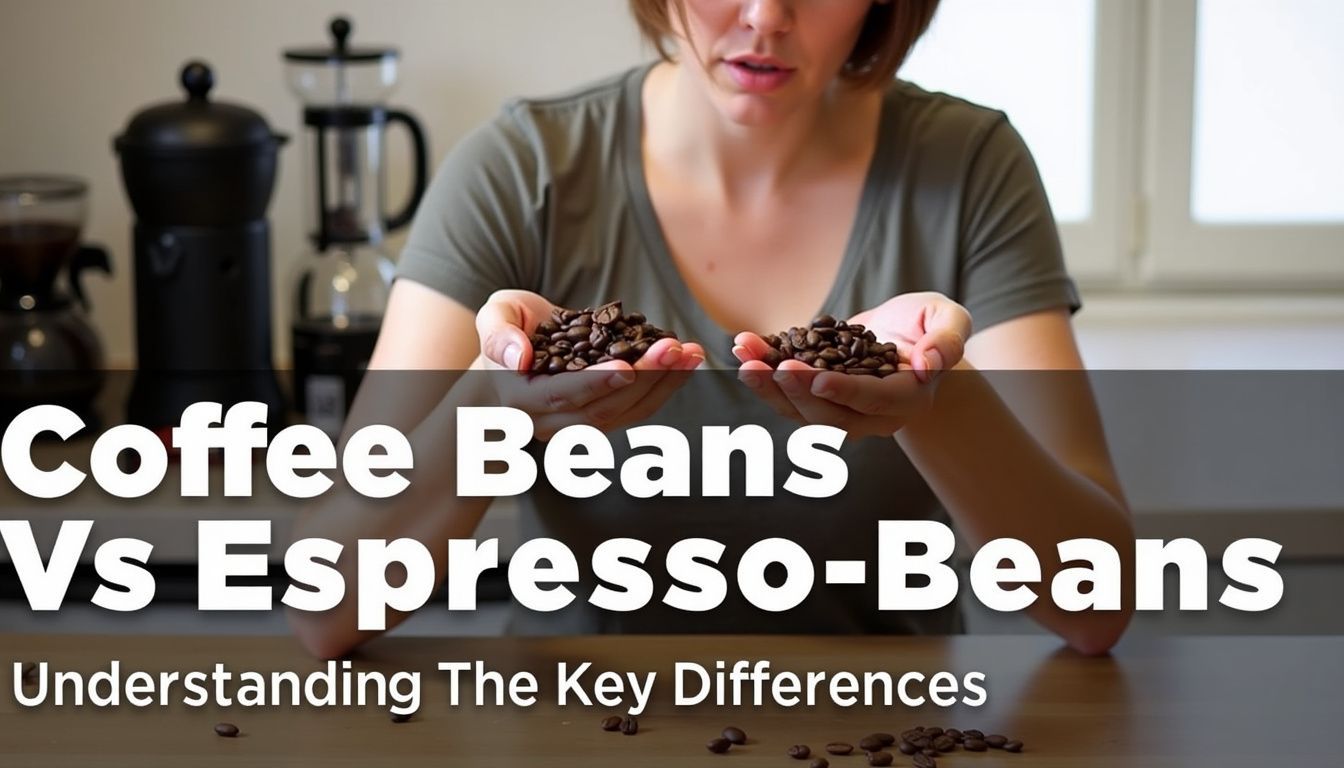Blog
Mastering Espresso Pressure: Brewing The Perfect Cup At 9 Bar
Struggling to brew the perfect espresso? Many coffee lovers find it challenging to achieve that ideal balance of flavour and texture.
Did you know that the ideal pressure for brewing espresso is 9 bars? That’s equivalent to the pressure experienced when scuba diving at a depth of 90m. This blog post will guide you through mastering espresso pressure, helping you create a rich, flavourful cup every time.
Understanding Brew Pressure’s Role in Espresso Excellence
Brew pressure plays a pivotal role in espresso excellence. Your espresso machine needs to generate 7-11 BARs of pressure for optimal extraction. At 9 BARs – nine times Earth’s standard atmospheric pressure – you’ll achieve the perfect balance of flavour and crema.
This pressure forces hot water through finely ground coffee, extracting oils and solids rapidly.
Pump machines excel at maintaining consistent pressure, unlike electric steam machines that produce a weak 1.5 BARs. Your pump espresso maker separates pressure and temperature systems, allowing precise control.
This separation ensures you can fine-tune each element independently, resulting in a perfectly balanced shot with rich crema and complex flavours.
The Ideal Espresso Pressure: Advocating 9 Bar
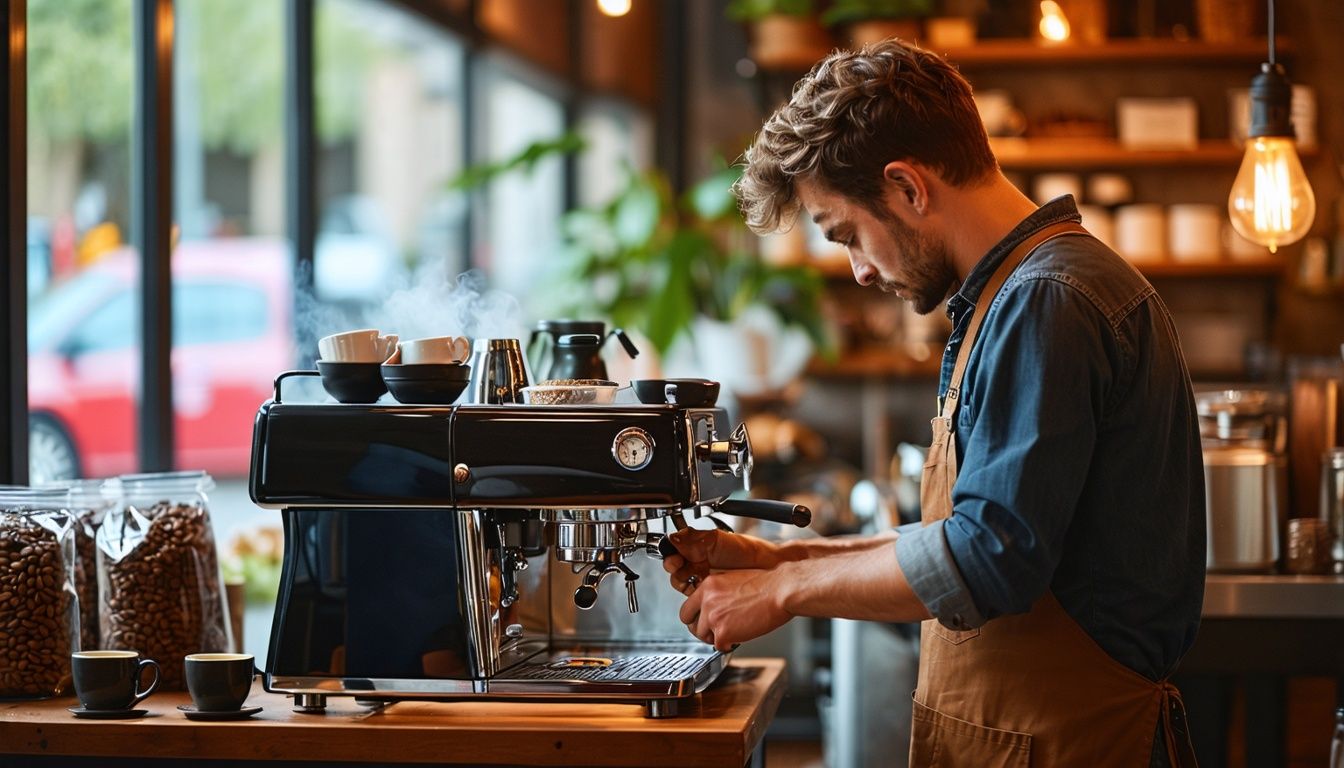
Nine bars of pressure stands as the gold standard for espresso brewing. This pressure level, equivalent to diving 90m underwater, strikes a perfect balance between water force and coffee puck resistance.
Baristas and coffee enthusiasts alike favour 9 bars for its ability to extract optimal flavour from freshly ground beans. At this pressure, the flow rate slows down just enough to allow maximum flavour extraction without over-extracting bitter compounds.
You’ll find that 9 bars suits a wide range of coffee types and roasts. Lighter roasts benefit from this higher pressure, which helps break down their denser cellular structure. Darker roasts, with their more brittle composition, still perform well but may also shine at slightly lower pressures.
The versatility of 9 bars makes it the go-to setting for most commercial espresso machines and home brewers aiming for consistently delicious shots.
Exploring the Impact of Different Pressure Levels on Espresso Quality
Pressure levels significantly influence espresso quality. A study comparing 6, 9, and 12 bars revealed intriguing results. Higher pressure extended extraction times, particularly with fresh coffee.
The carbon dioxide in fresh beans created more resistance, slowing the pour. Stale coffee, lacking this gas, produced less crema and faster flow rates at higher pressures.
Flow telemetry showed 12-bar shots quickly saturated the coffee bed, then slowed down more than lower-pressure shots. Total dissolved solids (TDS) varied with pressure, affecting taste.
These findings highlight pressure’s role in extraction dynamics and flavour profiles. You’ll want to consider your beans’ freshness when adjusting your espresso machine’s pressure for optimal results.
Steps to Fine-Tune Brew Pressure in Espresso Machines
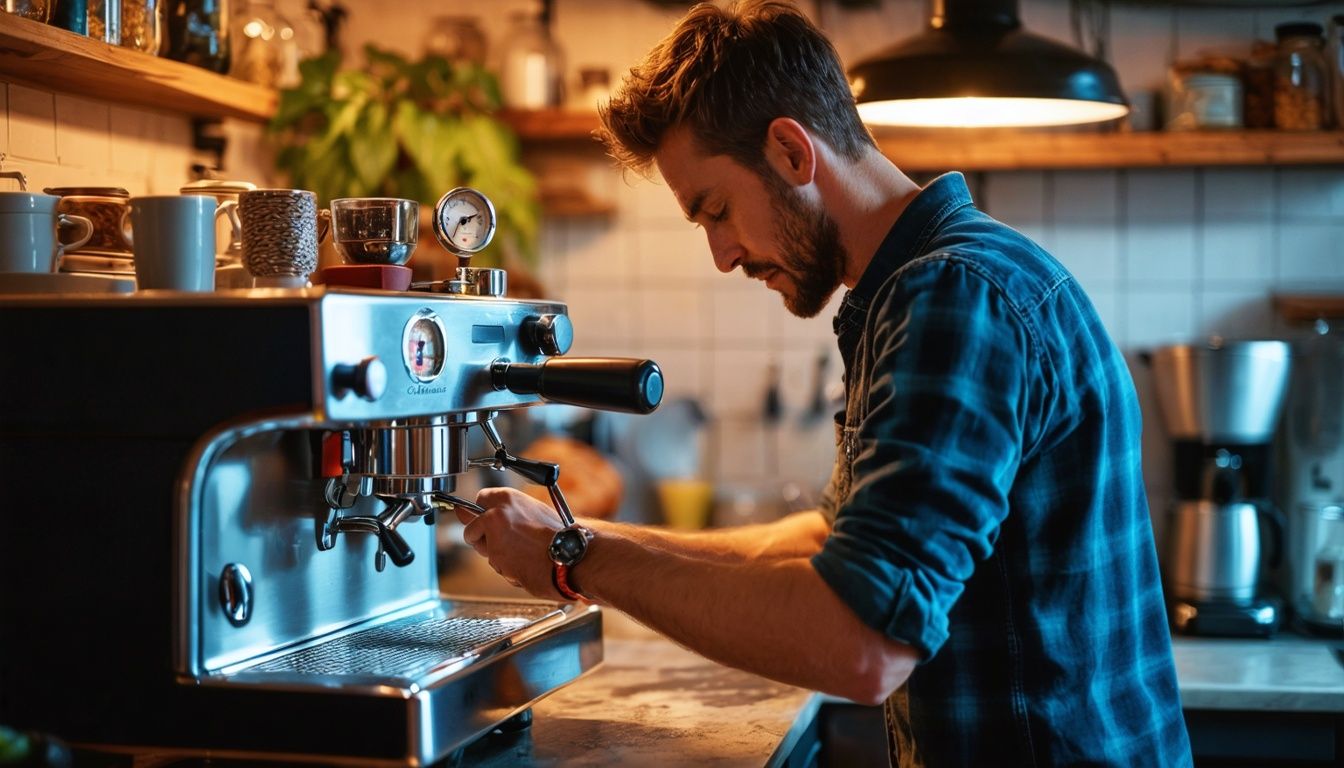 Adjusting brew pressure is key to crafting the perfect espresso. Follow these steps to fine-tune your machine:
Adjusting brew pressure is key to crafting the perfect espresso. Follow these steps to fine-tune your machine:
- Identify your pump type: Rotary pumps allow easy adjustment, while vibrating pumps may need modifications.
- Locate the adjustment point: For rotary pumps, find the pressure adjustment screw on the pump itself.
- Gather tools: You’ll need a flathead screwdriver and a portafilter pressure gauge.
- Install the pressure gauge: Attach it to your portafilter to monitor pressure during extraction.
- Pull a test shot: Run the machine and note the current pressure reading.
- Adjust gradually: Turn the screw clockwise to increase pressure, anticlockwise to decrease. Make small adjustments.
- Test and repeat: Pull another shot after each adjustment, aiming for 9 bar of pressure.
- Check consistency: Pull several shots to ensure stable pressure throughout extraction.
- Fine tune for taste: Slight variations around 9 bar can affect flavour. Experiment to find your perfect pressure.
- Maintain regularly: Check and adjust pressure monthly to keep your machine in top form.
Common Errors in Brew Pressure Adjustment
Brew pressure adjustment is a critical aspect of espresso preparation. Here are common errors to avoid when fine-tuning your machine:
- Setting pressure too high: Exceeding 9 bar can lead to over-extraction, resulting in bitter espresso with off-flavours.
- Using insufficient pressure: Less than 9 bar often produces under-extracted, watery shots lacking depth and complexity.
- Ignoring machine-specific requirements: ULKA vibe pump machines typically need 11-12 bar, while rotary machines perform best at 9 bar.
- Neglecting grind size adjustments: Failing to adjust grind fineness when changing pressure can disrupt extraction balance.
- Overlooking temperature stability: Inconsistent water temperature affects pressure consistency during extraction.
- Misaligning the portafilter: Improper seating can cause uneven pressure distribution across the coffee puck.
- Disregarding pump maintenance: Worn pumps may not maintain steady pressure, compromising shot quality.
- Skipping regular calibration: Pressure gauges can drift over time, leading to inaccurate readings and suboptimal extractions.
Additional Advice for Crafting the Perfect Espresso

For top-tier espresso, focus on grind size, water quality, and tamping technique. Read on for more tips to elevate your coffee game.
Selecting the Appropriate Espresso Machine
Selecting the right espresso machine is crucial for brewing perfect 9-bar espresso. You’ll need a device capable of reaching up to 9 bars of pressure. The EspressoWorks Espresso and Cappuccino Machine delivers up to 19 bars, while their All-In-One Coffee Maker offers 15 bars.
Both use a Thermoblock system, heating in about 45 seconds.
Consider machines with consistent brew pressure and a reliable pump. Look for features like pressure profiling and a quality grinder. A steam wand for frothing milk is essential for cappuccinos.
Remember, higher pressure doesn’t always mean better coffee – it’s about finding the sweet spot at 9 bars for optimal extraction.
Ensuring Consistent Brew Pressure
Maintaining steady brew pressure is key to espresso perfection. You’ll need an espresso machine with a built in pressure gauge and adjustable settings. Check your machine’s pressure regularly, aiming for the ideal 9 bar.
Fine tune as needed, adjusting the grind size and tamp pressure to achieve consistency.
Experiment with different coffee beans to master pressure control. Each variety may require slight tweaks to hit that sweet spot. Keep a log of your adjustments – it’ll help you replicate great shots and avoid under or over-extraction.
Remember, too much pressure leads to bitter espresso, while too little results in a watery brew.
Recommendations for Optimal Coffee Extraction
For optimal coffee extraction, grind your beans just before brewing. Aim for a fine consistency, similar to table salt. Use 18 grams of coffee to extract 36 grams of espresso in 30-35 seconds.
This ratio and timing ensure balanced flavour and proper extraction.
Apply firm, even pressure when tamping your coffee puck. This creates uniform resistance to water flow, leading to balanced extraction. Choose a medium-light roast profile for both espresso and filter coffee machines.
Higher extraction correlates with better taste, so focus on these key factors for a superior cup.
Examining Other Essential Factors Affecting Espresso Quality
Beyond pressure, several factors influence espresso quality. Grind size stands out as critical—too fine, and you’ll over-extract; too coarse, and you’ll under-extract. Your grinder’s quality directly impacts particle size consistency, affecting extraction evenness.
Water temperature, typically between 90-96°C, plays a vital role in flavour extraction. The coffee’s roast level and freshness significantly shape the final taste profile. Dosing precision—usually 18-22 grams for a double shot—ensures consistency.
Tamping technique affects water flow through the puck, impacting extraction uniformity.
Machine cleanliness can’t be overlooked. Regular backflushing and group head cleaning prevent old oils from tainting your shots. The basket size and shape influence extraction dynamics.
Pre-infusion, a low-pressure phase before full extraction, can improve consistency, especially with lighter roasts. Lastly, your cup’s temperature affects perceived flavour—warm cups preserve the espresso’s heat and aromatics better than cold ones.
Conclusion
Mastering espresso pressure at 9 bar yields exceptional results. You’ll notice richer flavour, fuller body, and perfect crema. Adjust your machine settings and grind size for optimal extraction.
Practice consistency in tamping and dosing. Remember, pressure is just one factor—water quality and bean freshness matter too. Your journey to espresso perfection starts now—enjoy the process and savour each cup.
FAQs
What’s the ideal pressure for brewing espresso?
9 bar is the sweet spot. It’s about 130 pounds per square inch. This pressure extracts the best flavour from coffee grounds.
How does pressure affect espresso extraction?
Pressure impacts taste. High pressure (9 bar) forces water through the coffee puck. This pulls out oils and flavours. Low pressure can lead to weak shots.
Can I adjust the pressure on my home espresso machine?
Some machines have a pressure valve. It lets you tweak the brewing pressure. Check your manual or get a pressure kit. Not all home machines allow this, though.
What’s the difference between pump pressure and brewing pressure?
Pump pressure is what the machine generates. Brewing pressure is what hits the coffee. A vibration pump might create 15 bar, but only 9 bar reaches the puck.
Does grind size affect pressure during extraction?
Absolutely. Too fine a grind can create too much resistance. This leads to pressure build-up. Too coarse, and water rushes through. Aim for a grind that gives 25-30 second shots.
How do commercial machines maintain consistent pressure?
Cafés use machines with precise control. They have flowmeters and pressure gauges. These keep the pressure steady at 9 bar. Consistency is key for quality espresso shots.
